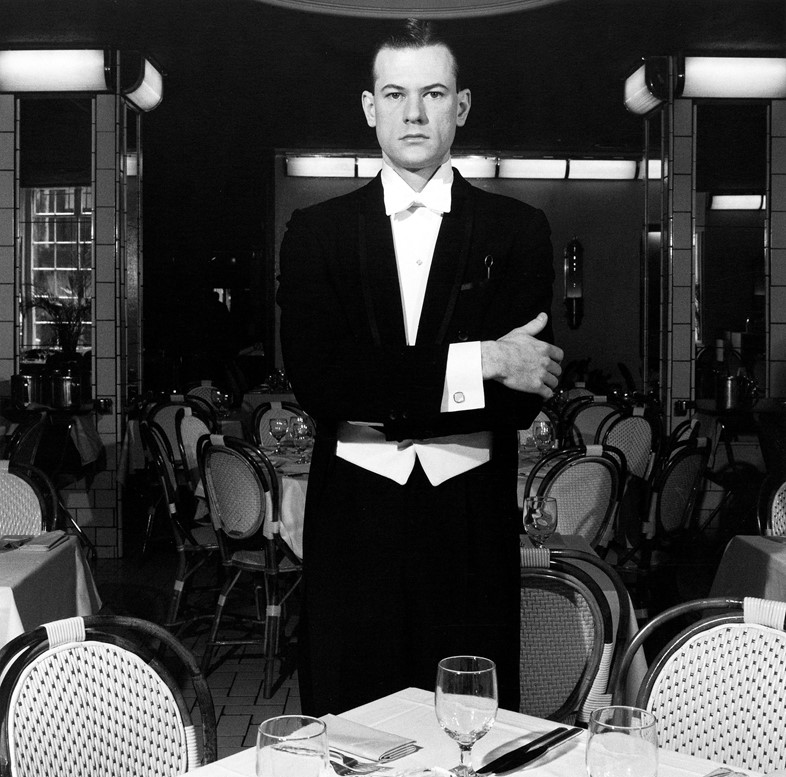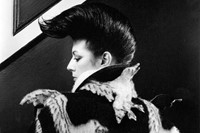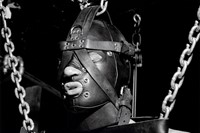Curated by Charlie Porter, a new online exhibition of Robert Mapplethorpe’s work looks into the way he deployed clothing in his photographs, often to erotic effect
Bottega Veneta once made the mistake of asking Robert Mapplethorpe to photograph their new designer purse. In the still-life from 1984 – included in Fashion, Clothes, People, Pictures, a new virtual exhibition of his photographs at Xavier Hufkens Gallery – the woven leather accessory lays on the ground like something dead. It is an unusually lacklustre photograph in the late American artist’s typically provocative oeuvre.
Mapplethorpe was introduced to fashion photography by the retailer Dianne Benson, who commissioned him to produce adverts for her SoHo boutique in 1980. He photographed his lover Phillip Prioleau in an elephant-themed Jean-Charles de Castelbajac sweater, then captured Benson, her hair magnificently coiffed, wearing an oversized de Castelbajac coat decorated with seagulls. These iconic pictures were his big break, leading to lucrative commissions with French and Italian Vogue among others, but in private conversations with friends, he made clear his passion was not so much for fashion as the people who wear it.
The writer Charlie Porter, author of What Artists Wear and the curator of this show, suggests Mapplethorpe treated clothing like a ‘tool’ to understand his subjects better. The raffish artist was, of course, known for his unique dress sense: “a mix of talismanic handmade jewellery with dirt cheap thrift store clothing then abundant in New York City,” designed to both scandalise and seduce. This exhibition suggests the way he deployed clothing in his photography, carefully framing its fit, folds and the skin allowed to show beneath it, was no less artful or deliberate.
Perhaps Mapplethorpe’s favourite attire to picture was the combination of stiff Levi’s, grubby vest tops and leather you’d throw on to go cruising in the West Village. “When I was choosing works for the exhibition, I was struck by the number of times Mapplethorpe used clothing to frame a hard cock,” Porter explains. The model in Cock and Jeans (1978) lays with his midriff exposed, his penis resting seductively between his forefinger and thumb; in other photographs it sticks out of unbuttoned trousers or an open fly. “It’s like the body is disrupting the line of the clothing, and by doing so, disrupting the polite and respectable status quo that society uses clothing to uphold.”
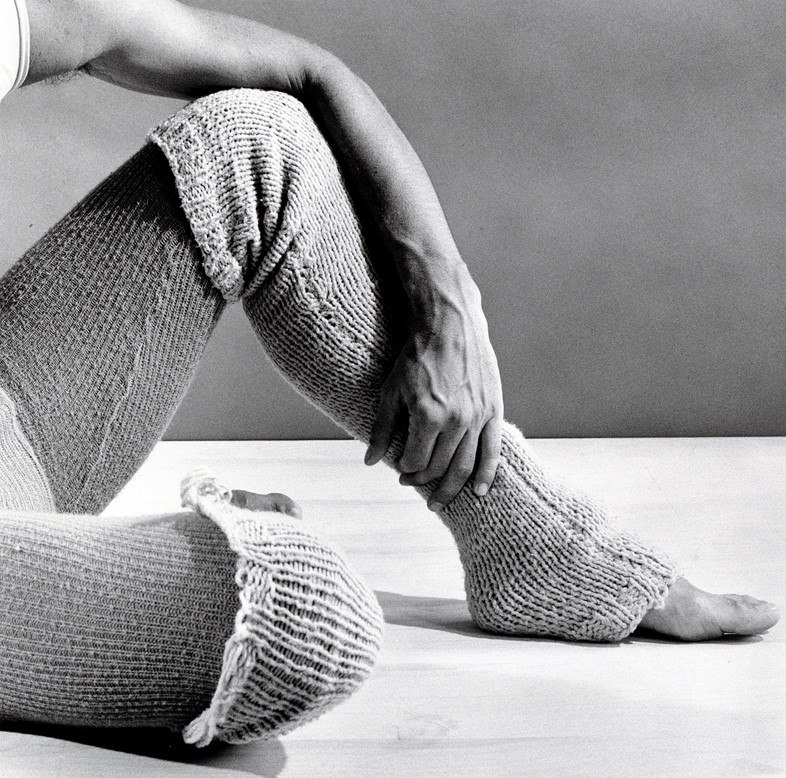
As well as express our desires, clothes also have the power to arouse them in fetishistic role-play: in Scott (Jockstrap), taken in the same year, a hirsute man sinks his face into a filthy pouch, while One 5th Avenue, from 1979, depicts an immaculately-dressed restaurant waiter at work, the coded subservience of his white tie and tails eroticised by Mapplethorpe’s gaze.
A triptych of images, shot on Fire Island in 1982, portrays his boyfriend Jack Walls undressing in a seductive show of affection. “To me, they are like a semaphore, a dance of flirtation, ”Porter says. “They show a playfulness Mapplethorpe is often not allowed to have by how his photography has historically been seen.” In the first photo, Walls is sat on a wooden deck above the dunes, fully clothed in a leather cap, sunglasses, vest, shorts and ankle boots, but a gradual undressing ensues over the next two photos, until his cock dangles free between his legs.
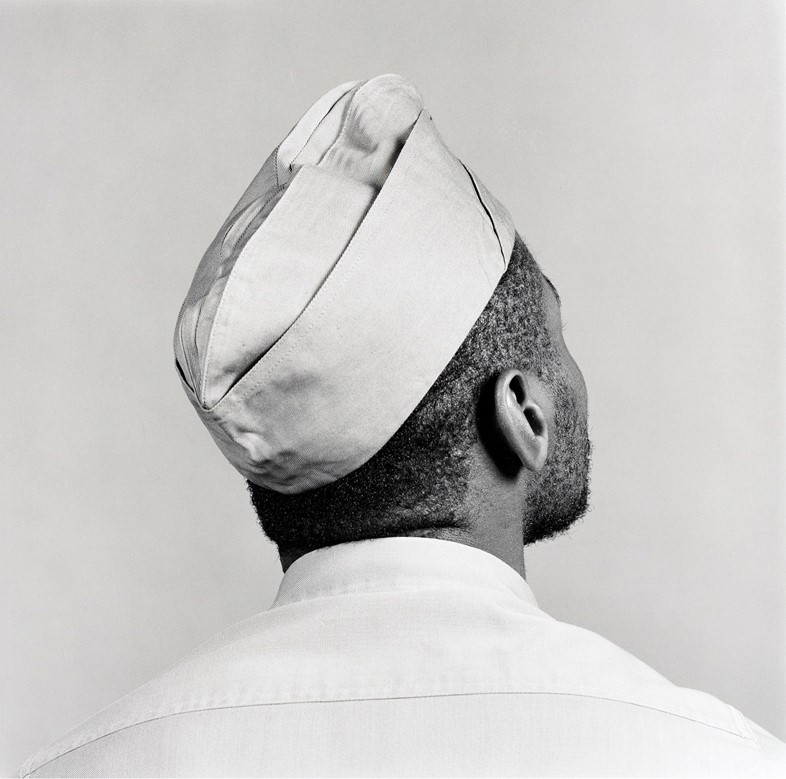
There’s no dressing up or undressing in his 1980s portraits of American artists Lee Krasner and Alice Neel, but if their everyday garments lack sophistication and style, they nevertheless appear intensely characterful: the oversized check shirt seems to hint at Krasner’s reticence, while Neel’s choice of a black sundress, dowdy but comfortable, projects her easy, relaxed manner. Both artists are allowed to be themselves before Mapplethorpe’s camera, which Porter suggests highlights two qualities not usually associated with the photographer: kinship and respect.
Nowadays Mapplethorpe is often portrayed as self-interested and exploitative, driven by money, celebrity and sex to produce needlessly provocative imagery, often at the expense of his sitters. “It can seem like he is putting them on a pedestal and turning them into objects, particularly his nudes,” Porter concedes. But he hopes this exhibition of 20 rarely-seen photographs, complemented by fresh testimonies from former collaborators, friends and lovers, will complicate the picture: “If we focus on clothing in Mapplethorpe’s images, we can feel closer to his subjects – and understand more fully the human beings he wants to portray.”
Fashion, Clothes, People, Pictures by Robert Mapplethorpe is on view online at Xavier Hufkens Gallery until 3 September 2023.
